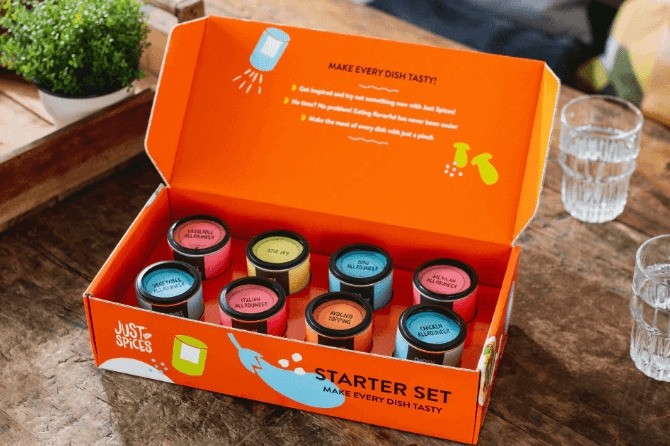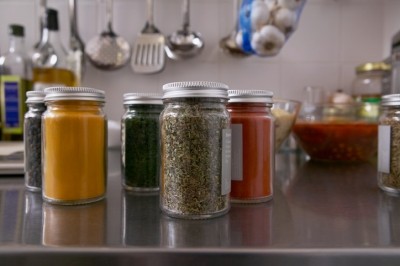Sauces, condiments, spices bring global flavors to consumers’ kitchens

The seasoning category saw notable growth due to increased home cooking and ranks as the fourth fastest growing specialty category with an 11.4% year-over-year increase in sales and a 49% rise in unit sales despite inflation, according to the Specialty Food Association’s 2024-25 State of the Specialty Food Industry report.
Younger demographics, especially Millennials and Gen Z, as well as urban populations, increasingly are embracing cultural flavors in snacks, beverages and global cuisines, Kantha Shelke, founder and principal of Corvus Blue LLC, a food science and research firm, told FoodNavigator-USA.
Notable innovations include flavored and garnishing salts, Latin/Mexican spice blends, Middle Eastern spices, paleo option, probiotic seasonings, single origin spices, smoked flavored, spice rubs, umami blends and wild foraged spices, Leana Salamah, SVP marketing and communications, Specialty Food Association, told FoodNavigator-USA.
Emerging technologies also are progressing the category with advancements in drying technologies, like freeze-drying and vacuum drying to preserve nutrition and quality attributes, steam and infrared sterilization of spices for safety, cryomilling (grinding in sub-zero temperatures to preserve natural aroma, color and flavor), optical sorting (for greater consistency and purity), and advanced packaging technologies like nitrogen flushing and vacuum sealing for safer, fresher and more flavorful spices and condiments, Shelke explained.
Spices like ginger, miso and chili, along with citrus botanicals such as yuzu and hibiscus, are gaining popularity, adding complexity and authenticity to traditional dishes. Complex spice blends from Korean, Japanese, Indian and African cuisines are enhancing flavor profiles, while floral flavors like chamomile and jasmine are on the rise in beverages and desserts, appealing to health-conscious consumers, according to Shelke.
Unique citrus varieties and umami-rich ingredients like miso and mushrooms are also in demand, with urban populations serving as early adopters of these global tastes. Health-conscious consumers particularly favor botanical and spice-based flavors due to their perceived health benefits, Shelke added.
Condiment sales see a boost driven by convenience, health-forward solutions
Condiments, dressings and marinades also saw an 8.7% boost in sales in 2023 driven by innovations and global flavor trends, according to data from Specialty Food Association. These include ferments (like gochujang and doenjang), fire-roasted and fruit-infused options, functional ingredients, Latin and lesser-known Asian regional flavors, Korean BBQ sauces, live vinegar-based dressings, paleo- and keto-friendly options, pickled vegetables, pouches and seasoning sauces, according to the Specialty Food Association report.
The category is growing as these products can be tailored towards health-conscious solutions such as low-sugar, low-sodium sauces and natural ingredients, and convenience in ready-to-use and portable formats, Shelke said.
She noted that in the US market, sauces and ketchup “have the largest market share,” driven by evolving consumer tastes — both in American consumers seeking diverse flavors from other cuisines and in developing nations where American cuisine, particularly tomato ketchup, is gaining popularity.
“Traditionally, condiments are simple add-ons for dishes to add flavor and are not really given much thought. Our options were once limited to mayo, mustard, BBQ, ketchup or vinegar-based hot sauce. Now there is a seemingly endless selection of flavors that allow shoppers to personalize their food for both taste and dietary needs,” Starr Edwards, CEO and co-founder of Bitchin’ Sauce, told FoodNavigator-USA.
Ponti’s balsamic vinegar fuses with American flavor trends
Ponti, a ninth-generation family-owned vinegar producer from Italy leverages its rich 240-year history in Italy’s vinegar category to stand out in the US market, Kim Sayid, country manager, Ponti, told FoodNavigator-USA. The brand, which is synonymous with vinegar in Italy, similar to “Kleenex” for tissues in the US, adheres to stringent quality standards, including B Corp certification and regulations set by the Consortium for Balsamic Vinegar of Modena.

Just like balancing the sweet and sour notes in balsamic vinegar, Ponti aims to pair Italian tradition with modern taste and culinary profiles “that people want to buy,” Sayid said.
Ponti caters to the American taste palette by introducing products that blend traditional Italian flavors with current US trends, Sayid said. This includes taking nods from the hot honey trend with the launch of its Chili Pepper Balsamic Glaze and barbecue sauces made with apple cider vinegar and balsamic vinegar of Modena. The brand also explores cross-cultural flavors, like its Soy Glaze with Balsamic Vinegar of Modena.
Ponti views the American taste as aspirational in Europe, Sayid said, as many Europeans admire American food and lifestyle, often incorporating American flavors and culinary traditions into their own culture, like burgers and French toast. While these foods may not be part of the everyday diet in Italy, they are considered as special treats and a portal into experimenting with different flavors. In Italy, balsamic vinegar on French toast serves as a twist to the traditional sweet, cinnamon and buttery flavor profile, which also mirrors the American trend of using the condiment in cocktails, and what Sayid describes as a two-way cultural exchange and fusion of flavors.
Bitchin’ Sauce plays up swicy and global flavors with its almond-base sauces
Bitchin’ Sauce’s playfully bold branding sets itself apart from traditional condiment brands, “evoking a fun and rebellious approach to flavor for its almond-based dips,” Edwards said.

The brand’s 15 sauces appeal to health-conscious consumers who are vegan, gluten-free and free from artificial ingredients, in addition to being kosher, non-GMO Project Verified, USDA Organic and Oregon Tilth Organic, depending on the item, Edwards explained.
With familiar, yet global flavors like Chipotle, Cilantro Chili, Pesto and the Indian-spiced Bombay, among others, Bitchin’ Sauce approaches flavor development with kitchen staples in mind, Edwards said.
“What flavors are folks most excited about? And how do we make the customer’s experience with the brand more enjoyable?” she said.
Last year, the company dove into the latest sweet, spicy and sour trend with its two launches: the swicy Hatch sauce and Dill Pickle. Bitchin’ Sauce also launched its squeeze bottles, “bridging the gap between dipping sauce and condiment,” and plans to release its 2-ounce single-serve formats for “on-the-go snacking,” Edwards explained.
Just Spices' playful approach to spices encourages flavor experimentation
Just Spices’ colorful packaging features illustrated faces to create an upbeat feel that stands out on shelves. The brand emphasizes simplicity and creativity, appealing to consumers who are curious about flavor experimentation, especially college students, Taylor Douglas, senior marketing manager, Just Spices, told FoodNavigator-USA.
“For college students specifically, Just Spices provides a one-stop shop for ensuring every meal they make will be delicious by mixing together a handful of single-blend spices into one compact can,” Douglas said.
Just Spices features global blends from Turkish Allrounder (a blend of red onion, sea salt, paprika, black cumin, sumac, oregano, parsley, etc.) and Thai Allrounder (a blend of chili, cilantro and lemongrass) to familiar seasonings like Chicken Allrounder (a blend of salt, tomato flakes and paprika) and Tofu Allrounder (a blend of coriander seed, fennel seed, ginger, chili peppers, etc.). The brand also offers suggestions for applications. For example, the Caprese Topping, made with dried tomato, red onion, leek, paprika and thyme, is suggested to be used for tomato salad, antipasti and bruschetta.
Just Spices’ blends emphasize flexibility for a variety of dishes, where “one can often times [equal] more than three different recipes/cuisines and can encompass multiple different cuisines,” Douglas said.
GOOD GOOD aligns with better-for-you trend with a twist on traditional English lemon curd
GOOD GOOD’s vegan lemon curd is a plant-based twist on an English classic traditionally made with milk and eggs. Using lemon concentrate and oil, faba bean protein, sunflower oil and sweeteners erythritol and stevia, the brand landed on these ingredients to achieve the creamy texture, Gardar Stefansson, CEO and co-founder GOOD GOOD, told FoodNavigator-USA.

The brand’s vegan positioning also differentiates it in the market despite challenges in sourcing the ingredients, Stefansson added.
“We faced several challenges in creating this product, particularly in sourcing high-quality, vegan ingredients that were also free from added sugar and suitable for large-scale production. One of the biggest hurdles was not just finding the right dairy and egg alternatives to achieve the creamy texture, but also ensuring these substitutes did not compromise on the authentic taste of lemon curd. Balancing taste and texture while keeping the product clean and natural required extensive testing and refinement,” Stefansson elaborated.
Shelke echoed these sentiments, adding that “healthier and plant-based condiments appeal to values-oriented health-conscious shoppers that scrutinize the ingredient list prior to purchasing, and care about the impact of their choices on the environment and animals and other humans.”

















